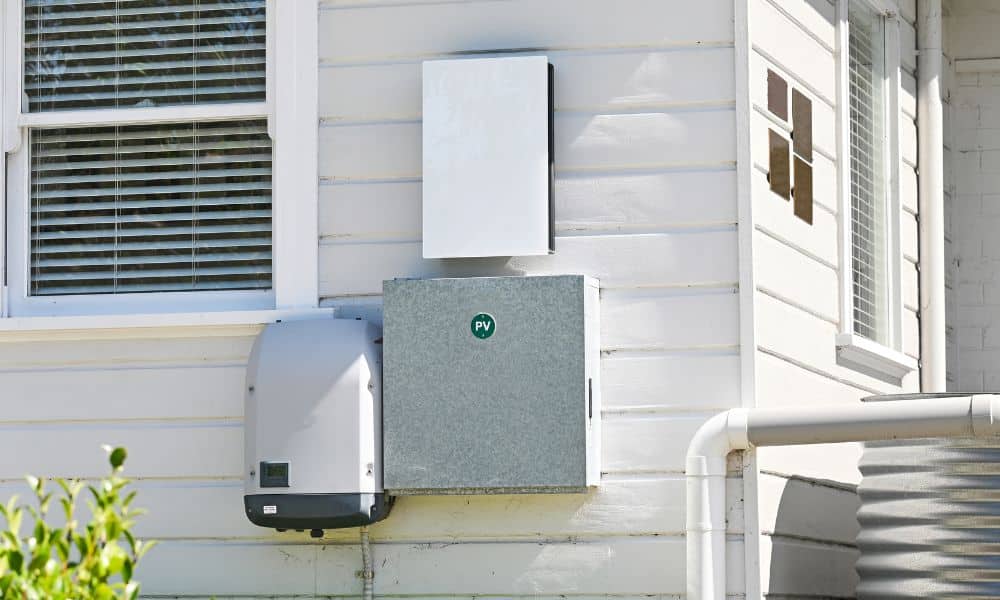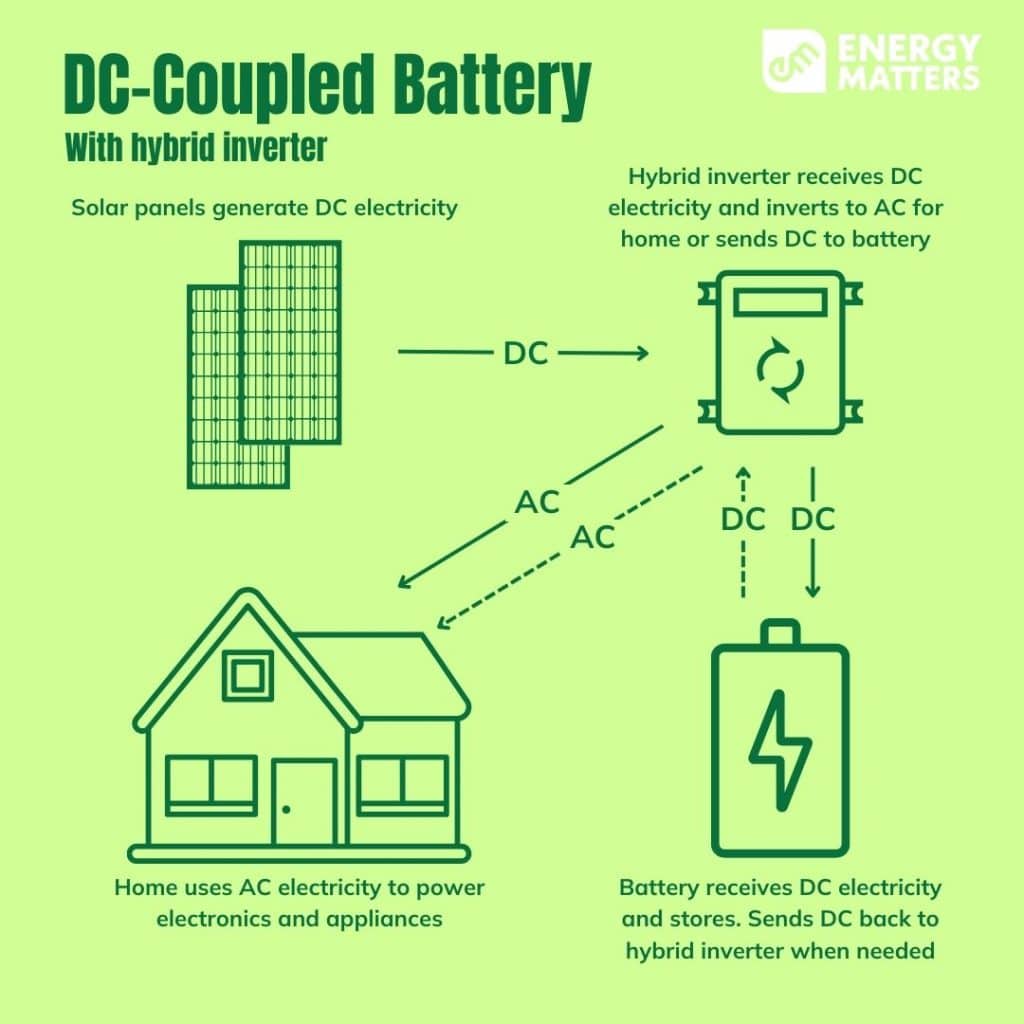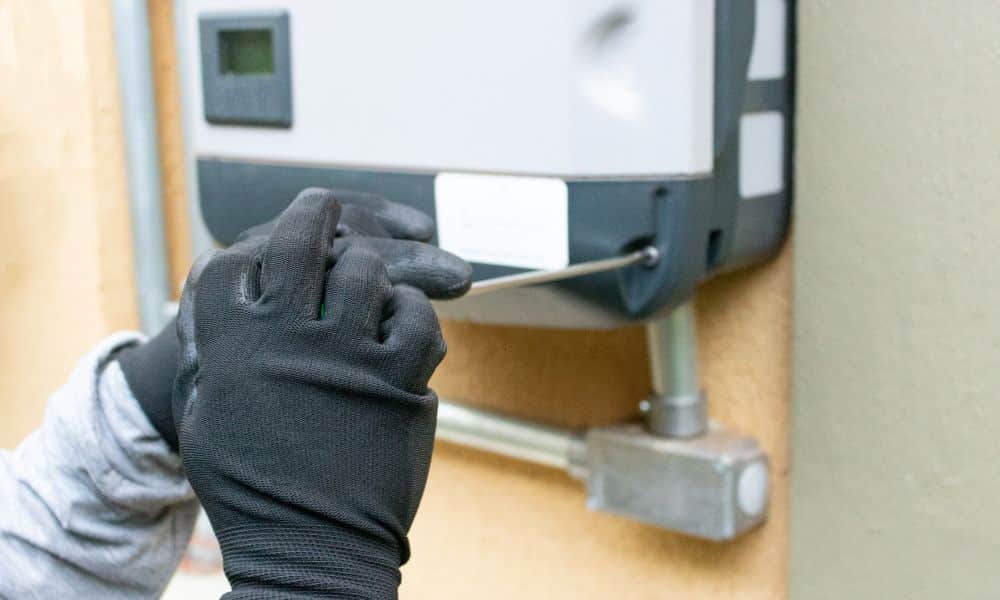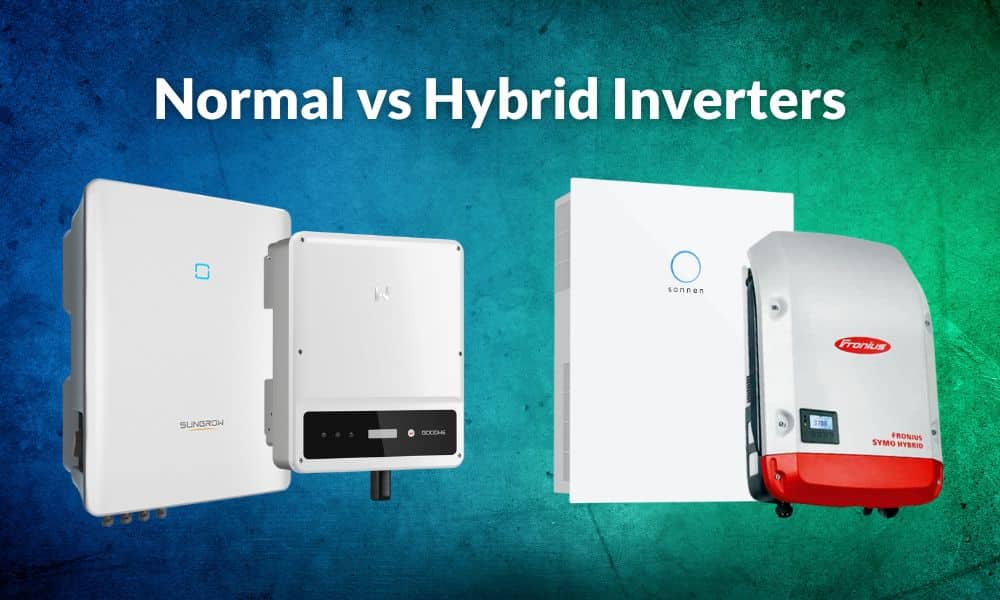As the world shifts towards sustainable energy solutions, solar power has emerged as a frontrunner in the quest for clean and renewable energy. Compare solar inverters to understand how they play a crucial role in harnessing and converting this solar energy into usable electricity. Among the diverse range of solar inverters available, two prominent options stand out – the normal solar inverter (string or microinverter) and the solar hybrid inverter. In this blog, we’ll delve into the differences between these two technologies, exploring their unique features and advantages. We’ll also answer common questions like “What is a hybrid solar inverter?” and “What is a battery inverter?”.
In this blog
What is a solar inverter?
Before we take a look at the differences, it is important first to understand what inverters are.
Your home or business uses Alternating Current (AC) electricity to power electronics and appliances. Electricity generated by solar panels and wind turbines is Direct Current (DC). So that your home or business can use the electricity, an inverter is required to invert the current from DC to AC.

On-grid systems use on-grid inverters, and off-grid systems require off-grid inverters. But there is a bridging technology called hybrid inverters. Let’s take a quick look at the different inverters available:
- On-grid inverters: On-grid inverters, commonly referred to as grid-tied, rely on the grid. Excess electricity generated by solar panels or wind turbines is sent back to the grid as AC electricity.
- Off-grid inverters: Off-grid systems rely on an additional component called a charge controller. Solar panels or wind turbines generate DC current which is sent to batteries via the charge controller. When the home or business requires electricity, the stored DC electricity in the batteries is sent to the off-grid inverter and then inverted to AC.
- Hybrid inverters: Hybrid solar inverters are just as their name implies. They work much the same as an on-grid inverter whilst having the ability to send DC electricity directly to a battery for storage. A charge controller is not required as the hybrid inverter intelligently works out what is needed by the home or business and sends and inverts the electricity as required.
Normal solar inverters
Normal solar inverters, also known as grid-tied inverters, are the more traditional and straightforward solution for solar energy systems. Their primary function is to convert the DC generated by solar panels into AC, which is suitable for powering household appliances and feeding excess electricity back into the grid. Here are some key features of normal solar inverters:
- Grid dependency: Normal solar inverters are dependent on the grid for operation. They require a constant grid connection to function, making them ineffective during power outages.
- Energy storage: Typically, normal solar inverters do not include a built-in battery storage system. As a result, excess energy generated during sunny periods is fed back into the grid rather than being stored for later use.
- Cost-effectiveness: Normal solar inverters are often more cost-effective than their hybrid counterparts, making them an attractive option for those primarily looking to reduce their electricity bills through solar power.
GoodWe, Sungrow, and Fronius are recommended inverter manufacturers with a range of grid-tied inverters available. Enphase manufactures microinverters that can be utilised on and off-grid with the aid of AC coupling.
Can I add a battery to a normal solar inverter?
Generally speaking, all grid-tied inverters can have a battery added to them. However, there is a cost to modify your setup. You will need to add a battery inverter to your system, which may cost upwards of $3,000. Some normal inverters come equipped as ‘AC coupling ready’. Either way, you will find that these inverter + battery setups are less efficient than hybrid inverters. It is important to note that some inverters may need to be replaced in order to add battery storage. AC-coupled inverters will also NOT allow for your battery to replenish once depleted during a blackout event, in most cases.
If you add a Tesla Powerwall battery, the battery comes with its own inverter which sends a signal to your existing inverter in the event of a blackout. This signal allows your inverter to operate even when the grid is down. This allows for the battery to be replenished by your solar panels for the duration of the blackout.
Why is AC Coupling less efficient than DC Coupling?
The electricity produced by your solar panels comes out as DC current. Your home electronics and appliances use AC power. The purpose of your inverter is to invert the DC current to AC. If you add a battery to your normal inverter, it is done so via AC coupling. The battery will then need to invert that AC current into DC for storage. It then sends it back to the inverter as DC to then be inverted back to AC for home usage. The multiple inversions result in a loss of electricity.
A hybrid inverter allows the DC current generated by the solar panels to flow directly to the battery for storage. When your home requires the stored energy, the battery will send the electricity to the inverter to be inverted to AC. The reduced inversions result in greater efficiency.


Solar hybrid inverters
Solar hybrid inverters combine the functionalities of a traditional solar inverter with energy storage capabilities, providing a more versatile and resilient solution. You may have heard of ‘battery-ready’ inverters, which is what hybrid inverters are generally otherwise known as. They combine the features of a normal inverter with that of a battery inverter. Here are some distinguishing features of solar hybrid inverters:
- Battery integration: The standout feature of solar hybrid inverters is their ability to integrate with battery storage systems. This allows users to store excess solar energy for use during periods of low sunlight or even during power outages.
- Grid interaction: Solar hybrid inverters can operate both on-grid and off-grid. During normal grid conditions, they work like traditional solar inverters, feeding excess energy back into the grid. In the absence of grid power, they seamlessly switch to using stored energy from the batteries. The inverters send electricity where it is needed.
- Backup power: The integration of battery storage in solar hybrid inverters provides the added benefit of backup power. This feature is invaluable in regions with unreliable grid power or frequent power outages, ensuring a continuous and reliable electricity supply.
- Increased efficiency: Solar hybrid inverters often boast higher efficiency levels, as they can optimise energy usage by intelligently managing the flow of electricity between the solar panels, batteries, and the grid. Batteries are also DC coupled to the inverter, allowing for greater efficiency.
Energy Matters highly recommends sonnen, GoodWe, Sungrow, Fronius, and FIMER for hybrid inverters.
Can I add any battery to my hybrid inverter?
The simple answer is no. Your hybrid inverter will only work with a limited number of batteries, as outlined by the manufacturer. If you are looking to install a hybrid battery now, with a view to add a battery down the track, then you will need to keep in mind that your options may be limited. We recommend purchasing a hybrid battery with the intent to add a battery immediately.

Should I purchase a normal or hybrid inverter?
The decision between a normal solar inverter and a solar hybrid inverter depends on your individual needs and preferences. Here are some key factors to consider:
- Your budget: Hybrid inverters cost more than standard string inverters and, sometimes, more than microinverters. You’ll need to consider your future plans if a battery will not be added immediately.
- Adding batteries: Hybrid inverters are generally purchased with a view to add a battery. If you have no plans to do this, a string inverter, or microinverters, will be all you need.
- Output efficiency: If you plan to add a battery, a hybrid inverter will have a greater output efficiency. This will result in the maximisation of your system and reduced loss.
We recommend discussing your options with your installer. Query the cost benefits of each inverter, especially if you plan to add a battery now or in the future. Energy Matters can get the ball rolling for you today! Request FREE quotes and we will connect you with local installers. These installers will create a tailored solution for you – completely obligation-free!
In the evolving landscape of solar energy solutions, choosing between a normal solar inverter and a solar hybrid inverter depends on individual needs and preferences. While normal solar inverters are a cost-effective option for those primarily looking to reduce electricity bills, solar hybrid inverters offer a more versatile and resilient solution with the added benefits of energy storage and backup power. As technology advances, the choice between these two options will likely become even more nuanced, providing consumers with an array of sustainable energy choices for the future.














































